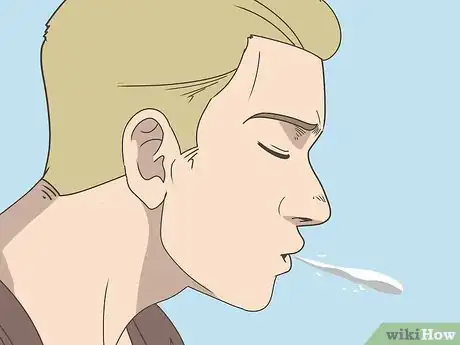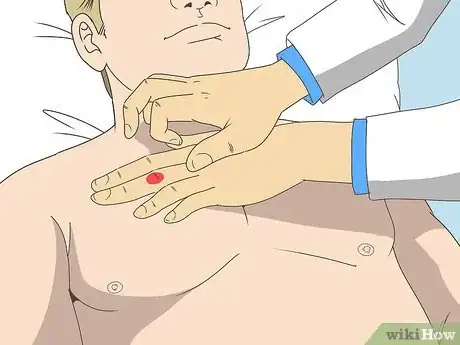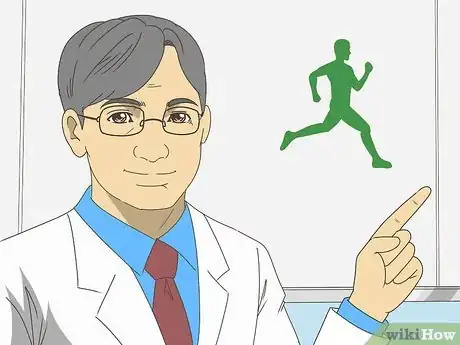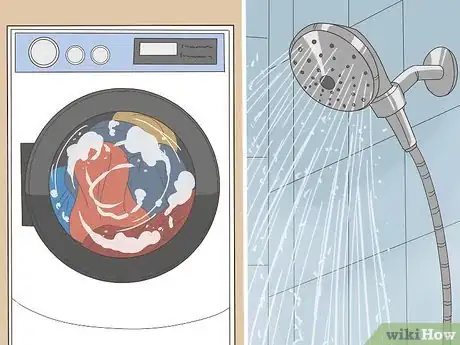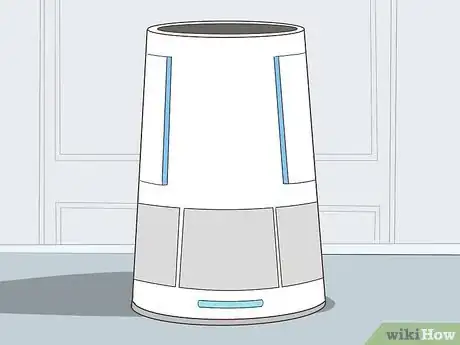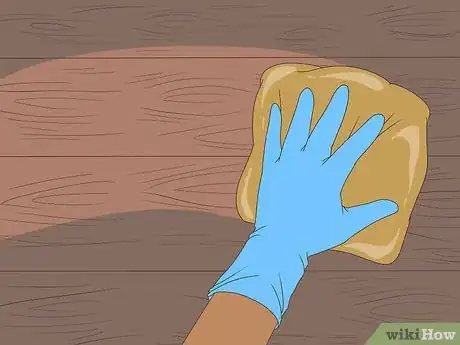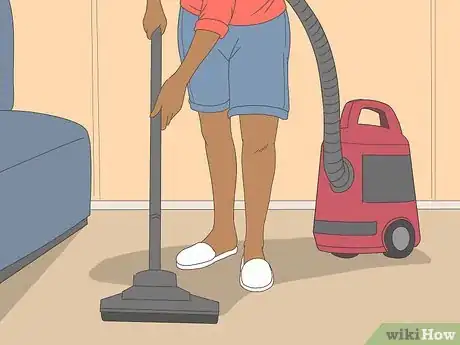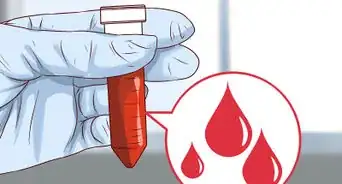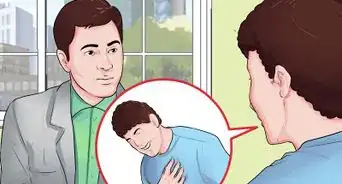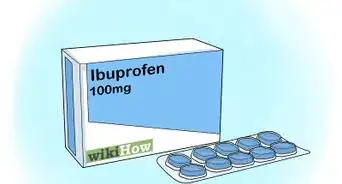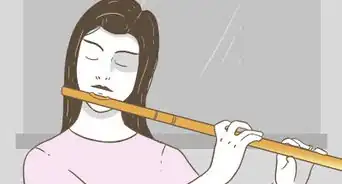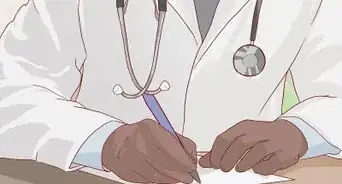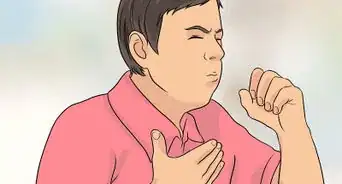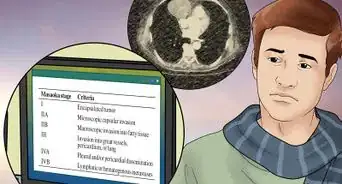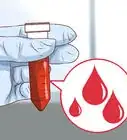This article was co-authored by Ni-Cheng Liang, MD. Dr. Ni-Cheng Liang is a board certified Pulmonologist and the Director of Pulmonary Integrative Medicine at Coastal Pulmonary Associates affiliated with the Scripps Health Network in San Diego, California. She also serves as a Voluntary Assistant Professor of Medicine at the University of California San Diego School of Medicine while volunteering for the UCSD Medical Student-Run Free Clinic for uninsured patients. With over 15 years of experience, Dr. Liang specializes in pulmonary and respiratory medical concerns, mindfulness teaching, physician wellness, and integrative medicine. Dr. Liang received her Doctor of Medicine (MD) from the University of Maryland School of Medicine. Dr. Liang was voted as a San Diego Top Doctor in 2017 and 2019. She was also awarded the 2019 American Lung Association San Diego Lung Health Provider of the Year.
There are 11 references cited in this article, which can be found at the bottom of the page.
This article has been viewed 77,494 times.
Any time you breathe in dust, it could end up in your lungs and cause irritation or damage. The good news is that your lungs naturally clean themselves.[1] Still, you can give your lungs some help getting rid of the dust by clearing out phlegm. Prevention is also important to stop dust from getting in your lungs in the first place. With these tips, you can keep your lungs healthy and free of dust.
Steps
Clearing Phlegm
-
1Bring up phlegm with controlled coughing. If you have phlegm or dust in your lungs that won’t come up, loosen it with some coughing. Sit on the edge of a chair with your feet on the ground and lean forward slightly. Inhale and cross your arms over your stomach. Cough quickly 2-3 times, pushing on your stomach each time. This should force up trapped mucus.[2]
- You can do this multiple times, but rest in between each session.
- Make sure you've removed yourself from the area where you inhaled dust so you don't breathe in any more of it.[3]
-
2Spit out any phlegm you cough up. Coughing up phlegm is the main way that your lungs clean themselves of dust and bacteria. When you do cough up any mucus or phlegm, spit it out to get rid of all that gross stuff.[4]
- You can also swallow phlegm. It won’t hurt you, and it’s better to have dust in your stomach than your lungs.
Advertisement -
3Try steam inhalation to loosen trapped phlegm. Sometimes phlegm won’t come up even with coughing. Research shows that steam inhalation therapy can loosen mucus and improve breathing.[5] Try breathing in deeply over a pot of hot water, or inhaling deeply while you’re in the shower. The steam can help loosen and bring up mucus and dust.
- Be very careful with this treatment because you could get burned. Make sure the water and steam is not hot enough to cause any pain or scaled your skin.[6]
-
4Tap around your chest to loosen phlegm further. Ask your doctor to show you how to do chest percussion. They'll instruct you to cup your hand and gently tap a few times around your chest and back to loosen up mucus and help your lungs get rid of it. Avoid tapping directly onto your spine or breastbone, though.[7]
- The right spots to tap can vary from person to person, so it's important to have a medical professional show you how to do this.
-
5Exercise regularly to help clear your lungs. Exercising can help your lungs move foreign particles out and can improve your lung function.[8] This helps your lungs stay healthy and clean themselves better. If you don't exercise often, make it a part of your regular schedule.[9]
- If you have any breathing or lung problems, be sure to ask your doctor if exercise is safe for you. They can give you suggestions on the best ways to exercise.
Preventing Inhalation
-
1Wear a mask whenever you’re around dust. Whenever you’re doing something that could kick up dust, there’s always a risk that you’ll inhale some of it. Protect your lungs by wearing a reusable or disposable dust mask so you don’t breathe in any of that dust.[10]
- Common things that produce dust include cleaning your home, working in the garden, mowing your grass, or cutting wood. It’s a good idea to wear a dust mask during all of these activities.
- If you work around dust or debris, then use a respirator with a certified HEPA filter for the best protection.[11]
-
2Wash your skin and clothes if they’re covered in dust. Any dust on your body could end up in your lungs if you breathe it in. After working around dust, take off your clothes and wash them, then take a shower as soon as possible.[12]
- Be sure to wash your hair too. Dust and debris can hide here.
- Be careful when you’re removing dusty clothes. Take them off slowly so you don’t kick up a lot of dust.
-
3Use an air purifier in your home. Air purifiers filter dust and pollutants out of the air so you won't breathe them in. If you want an extra layer of protection at home, then running one of these machines can keep your lungs clear.[13]
- Be sure to follow the purifier's directions to clean the filter properly. It won't work as well if the filter is dirty.
- Remember that air purifiers can't rid of all the dust in the air, so they're not a replacement for wearing a mask or cleaning regularly.
- For best results, purchase an air purifier that has a built-in HEPA filter.[14]
-
4Wipe down dusty areas and tools with a wet rag. Water helps remove dust and prevent it from going into the air. If you need to clean any dusty areas or tools, use a wet rag and wipe slowly so you don’t disturb the dust.[15]
- If you’re working in an especially dusty area, like an old house, it’s a good idea to spray the area lightly with water before you start. That way, you’ll kick up less dust while you work.
-
5Use a vacuum instead of a broom to clean. Brooms kick up dust and don’t do a great job of picking it up. It’s much better to use a vacuum in dusty areas so you get rid of as much dust as possible.[16]
-
6Quit smoking and vaping or don’t start in the first place. Smoking and vaping both force a lot of chemicals into your lungs that cause irritation and damage. Keep your lungs in good shape by avoiding smoking and vaping, either by quitting or never starting to begin with.[17]
-
7Have regular physical exams to check your lungs for damage. The only real way to know if you have any lung issues is with regular doctor’s appointments. Have annual physicals and be sure to schedule an appointment if you feel like something might be wrong, like if you’re having trouble breathing.[18]
- This is especially important if you work around a lot of dust. You can catch any damage early and take the necessary treatment steps before it gets too serious.
- If you're experiencing ongoing shortness or breath or a cough after inhaling dust, visit a doctor.[19]
Expert Q&A
-
QuestionWhat do you do if you inhale too much dust?
 Ni-Cheng Liang, MDDr. Ni-Cheng Liang is a board certified Pulmonologist and the Director of Pulmonary Integrative Medicine at Coastal Pulmonary Associates affiliated with the Scripps Health Network in San Diego, California. She also serves as a Voluntary Assistant Professor of Medicine at the University of California San Diego School of Medicine while volunteering for the UCSD Medical Student-Run Free Clinic for uninsured patients. With over 15 years of experience, Dr. Liang specializes in pulmonary and respiratory medical concerns, mindfulness teaching, physician wellness, and integrative medicine. Dr. Liang received her Doctor of Medicine (MD) from the University of Maryland School of Medicine. Dr. Liang was voted as a San Diego Top Doctor in 2017 and 2019. She was also awarded the 2019 American Lung Association San Diego Lung Health Provider of the Year.
Ni-Cheng Liang, MDDr. Ni-Cheng Liang is a board certified Pulmonologist and the Director of Pulmonary Integrative Medicine at Coastal Pulmonary Associates affiliated with the Scripps Health Network in San Diego, California. She also serves as a Voluntary Assistant Professor of Medicine at the University of California San Diego School of Medicine while volunteering for the UCSD Medical Student-Run Free Clinic for uninsured patients. With over 15 years of experience, Dr. Liang specializes in pulmonary and respiratory medical concerns, mindfulness teaching, physician wellness, and integrative medicine. Dr. Liang received her Doctor of Medicine (MD) from the University of Maryland School of Medicine. Dr. Liang was voted as a San Diego Top Doctor in 2017 and 2019. She was also awarded the 2019 American Lung Association San Diego Lung Health Provider of the Year.
Board Certified Pulmonologist Move to an area with clean air; ideally, somewhere outside. If that kind of space isn't available, leave the room where you inhaled the dust.
Move to an area with clean air; ideally, somewhere outside. If that kind of space isn't available, leave the room where you inhaled the dust. -
QuestionWhat is the fastest way to get dust out of your lungs?
 Ni-Cheng Liang, MDDr. Ni-Cheng Liang is a board certified Pulmonologist and the Director of Pulmonary Integrative Medicine at Coastal Pulmonary Associates affiliated with the Scripps Health Network in San Diego, California. She also serves as a Voluntary Assistant Professor of Medicine at the University of California San Diego School of Medicine while volunteering for the UCSD Medical Student-Run Free Clinic for uninsured patients. With over 15 years of experience, Dr. Liang specializes in pulmonary and respiratory medical concerns, mindfulness teaching, physician wellness, and integrative medicine. Dr. Liang received her Doctor of Medicine (MD) from the University of Maryland School of Medicine. Dr. Liang was voted as a San Diego Top Doctor in 2017 and 2019. She was also awarded the 2019 American Lung Association San Diego Lung Health Provider of the Year.
Ni-Cheng Liang, MDDr. Ni-Cheng Liang is a board certified Pulmonologist and the Director of Pulmonary Integrative Medicine at Coastal Pulmonary Associates affiliated with the Scripps Health Network in San Diego, California. She also serves as a Voluntary Assistant Professor of Medicine at the University of California San Diego School of Medicine while volunteering for the UCSD Medical Student-Run Free Clinic for uninsured patients. With over 15 years of experience, Dr. Liang specializes in pulmonary and respiratory medical concerns, mindfulness teaching, physician wellness, and integrative medicine. Dr. Liang received her Doctor of Medicine (MD) from the University of Maryland School of Medicine. Dr. Liang was voted as a San Diego Top Doctor in 2017 and 2019. She was also awarded the 2019 American Lung Association San Diego Lung Health Provider of the Year.
Board Certified Pulmonologist Your body can usually handle it. However, you should visit a doctor if you're still coughing or feeling short of breath within minutes, hours, or days of inhaling the dust.
Your body can usually handle it. However, you should visit a doctor if you're still coughing or feeling short of breath within minutes, hours, or days of inhaling the dust.
Warnings
- If you do notice any trouble breathing, see your doctor right away. Early intervention and treatment are important to overcome any potential lung issues.⧼thumbs_response⧽
References
- ↑ https://www.pri.org/stories/2012-08-25/lungs-have-their-own-self-cleaning-systems-get-rid-mucus
- ↑ https://www.mottchildren.org/health-library/za1357
- ↑ Ni-Cheng Liang, MD. Board Certified Pulmonologist. Expert Interview. 18 June 2021.
- ↑ https://www.ccohs.ca/oshanswers/chemicals/lungs_dust.html
- ↑ https://www.hilarispublisher.com/open-access/the-effects-of-a-warmed-steam-inhalation-on-patients-with-chronic-obstructive-pulmonary-disease-a-crosssectional-controlled-study-2161-105X-1000471.pdf
- ↑ https://bjgp.org/content/62/600/e473
- ↑ https://www.mottchildren.org/health-library/za1357
- ↑ Ni-Cheng Liang, MD. Board Certified Pulmonologist. Expert Interview. 18 June 2021.
- ↑ https://www.lung.org/blog/can-you-detox-your-lungs
- ↑ https://www.hopkinsmedicine.org/health/conditions-and-diseases/pneumoconiosis
- ↑ https://www.worksafe.qld.gov.au/__data/assets/pdf_file/0021/17238/silica-lung-factsheet.pdf
- ↑ https://www.hopkinsmedicine.org/health/conditions-and-diseases/pneumoconiosis
- ↑ https://www.goodhousekeeping.com/appliances/air-purifier-reviews/a25252001/do-air-purifiers-work/
- ↑ Ni-Cheng Liang, MD. Board Certified Pulmonologist. Expert Interview. 18 June 2021.
- ↑ https://www.worksafe.qld.gov.au/__data/assets/pdf_file/0021/17238/silica-lung-factsheet.pdf
- ↑ https://www.ccohs.ca/oshanswers/chemicals/lungs_dust.html
- ↑ https://www.nhs.uk/conditions/silicosis/
- ↑ https://www.hopkinsmedicine.org/health/conditions-and-diseases/pneumoconiosis
- ↑ Ni-Cheng Liang, MD. Board Certified Pulmonologist. Expert Interview. 18 June 2021.


